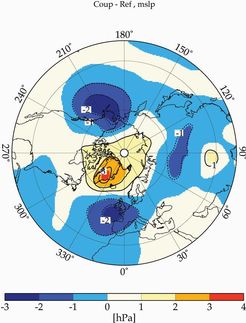New molecular force probe stretches molecules, atom by atom
Advertisement
Chemists at the University of Illinois have created a simple and inexpensive molecular technique that replaces an expensive atomic force microscope for studying what happens to small molecules when they are stretched or compressed.
The researchers use stiff stilbene, a small, inert structure, as a molecular force probe to generate well-defined forces on various molecules, atom by atom.
"By pulling on different pairs of atoms, we can explore what happens when we stretch a molecule in different ways," said chemistry professor Roman Boulatov. "That information tells us a lot about the properties of fleeting structures called transition states that govern how, and how fast, chemical transformations occur."
Boulatov, research associate Qing-Zheng Yang, postdoctoral researcher Daria Khvostichenko, and graduate students Zhen Huang and Timothy Kucharski describe the molecular force probe and present early results in Nature Nanotechnology .
Similar to the force that develops when a rubber band is stretched, restoring forces occur in parts of molecules when they are stretched. Those restoring forces contain information about how much the molecule was distorted, and in what direction. The molecular force probe allows reaction rates to be measured as a function of the restoring force in a molecule that has been stretched or compressed. This information is essential for developing a chemomechanical kinetic theory that explains how force affects rates of chemical transformations.
Such a theory will help researchers better understand a host of complex phenomena, from the operation of motor proteins that underlie the action of muscles, to the propagation of cracks in polymers and the mechanisms by which living cells sense forces in their surroundings.
"Localized reactions offer the best opportunity to gain fundamental insights into the interplay of reaction rates and molecular restoring forces," Boulatov said, "but these reactions are extremely difficult to study with a microscopic force probe."
Microscopic force probes, which are utilized by atomic force microscopes, are much too large to grab onto a single pair of atoms. Measuring microns in size, the probe tips contact many atoms at once, smearing experimental results.
"By replacing microscopic force probes with small molecules like stiff stilbene, we can study the relationship between restoring force and reaction rate for localized reactions," Boulatov said. "The more accurately we know where our probe acts, the better control we have over the distortion, and the easier it is to interpret the results."
Using conventional methods, Boulatov and his students first attach stiff stilbene to a molecule they wish to study. Then they irradiate the resulting molecular assembly with visible light. The light causes the stilbene to change from a fully relaxed shape to one that exerts a desired force on the molecule. The chemists then measure the reaction rate of the molecule as a function of temperature, which reveals details of what caused the reaction to accelerate.
One type of chemical transformation the researchers studied is the breaking of one strong (covalent) chemical bond at a time. The experimental results were sometimes counterintuitive.
"Unlike a rubber band, which will always break faster when stretched, pulling on some chemical bonds doesn't make them break any faster; and sometimes it's a bond that you don't pull on that will break instead of the one you do pull," Boulatov said. "That's because experiences in the macroscopic world do not map particularly well to the molecular world."
Molecules do not live in a three-dimensional world, Boulatov said. Molecules populate a multi-dimensional world, where forces applied to a pair of atoms can act in more than three dimensions.
"Even small molecules will stretch and deform in many different ways," Boulatov said, "making the study of molecular forces even more intriguing."


































































